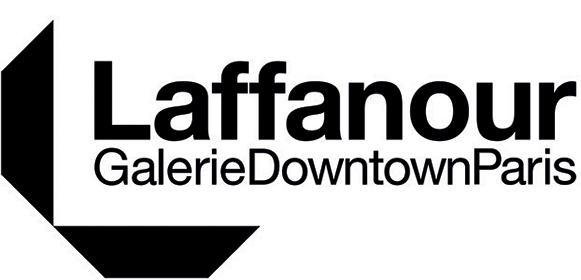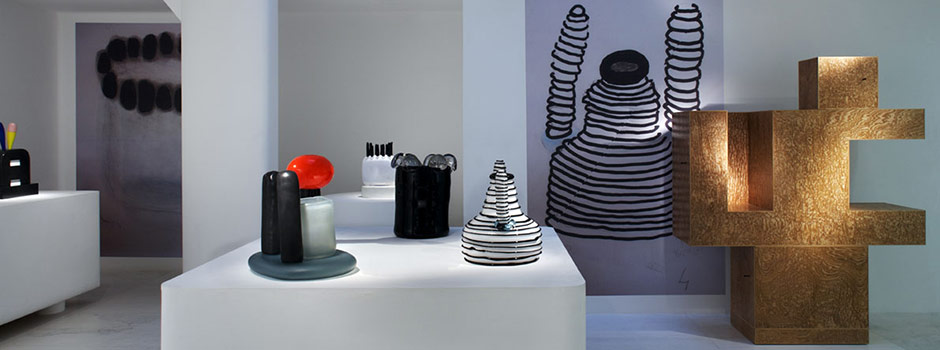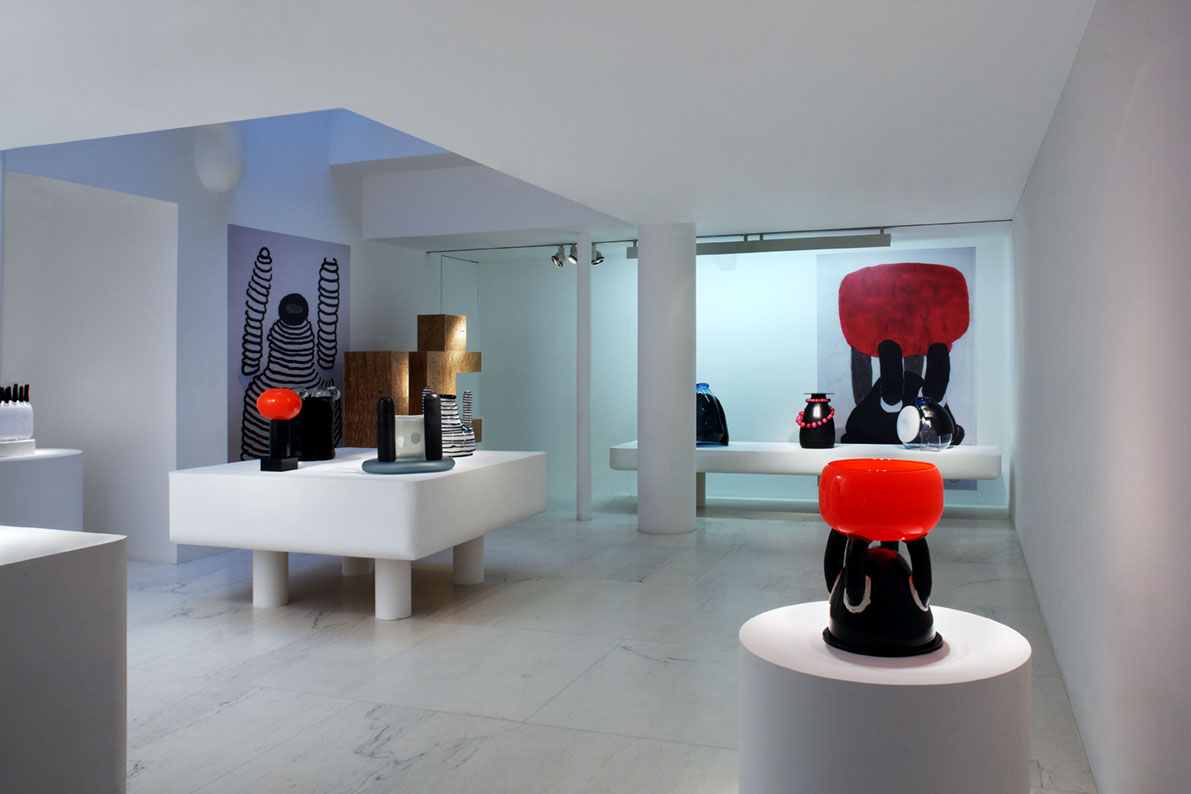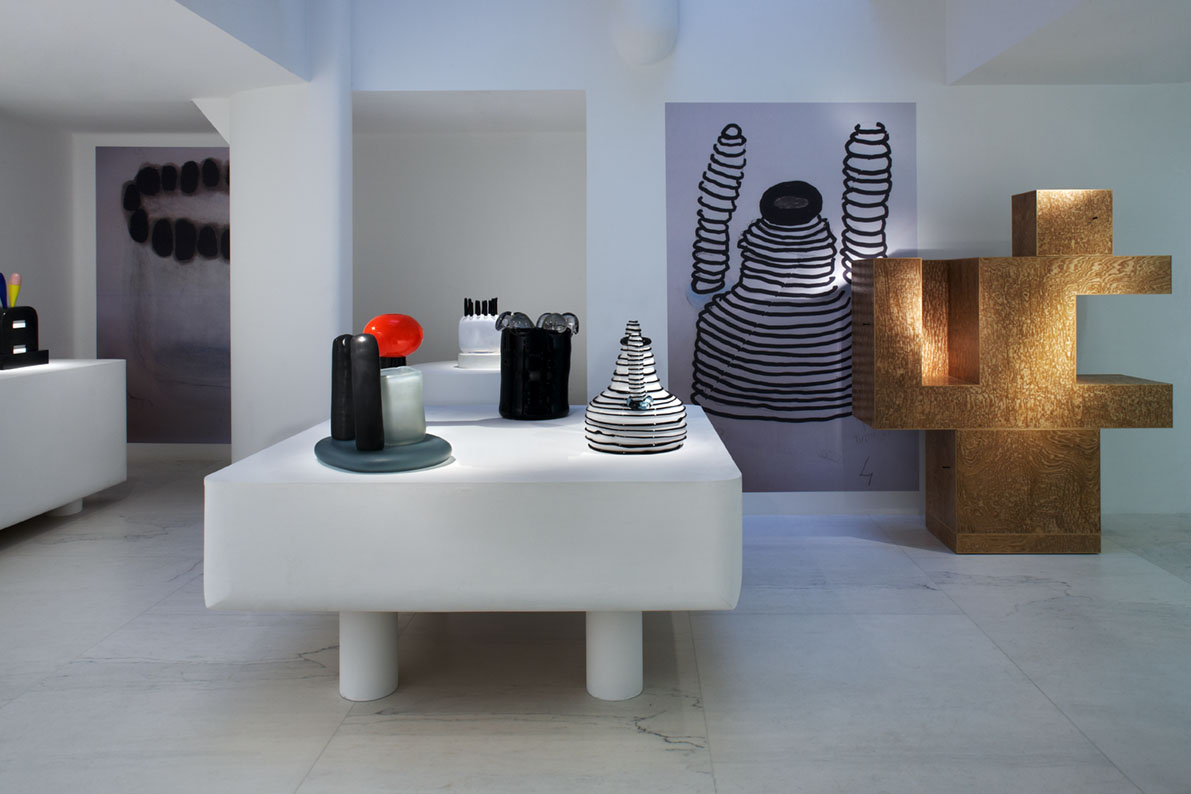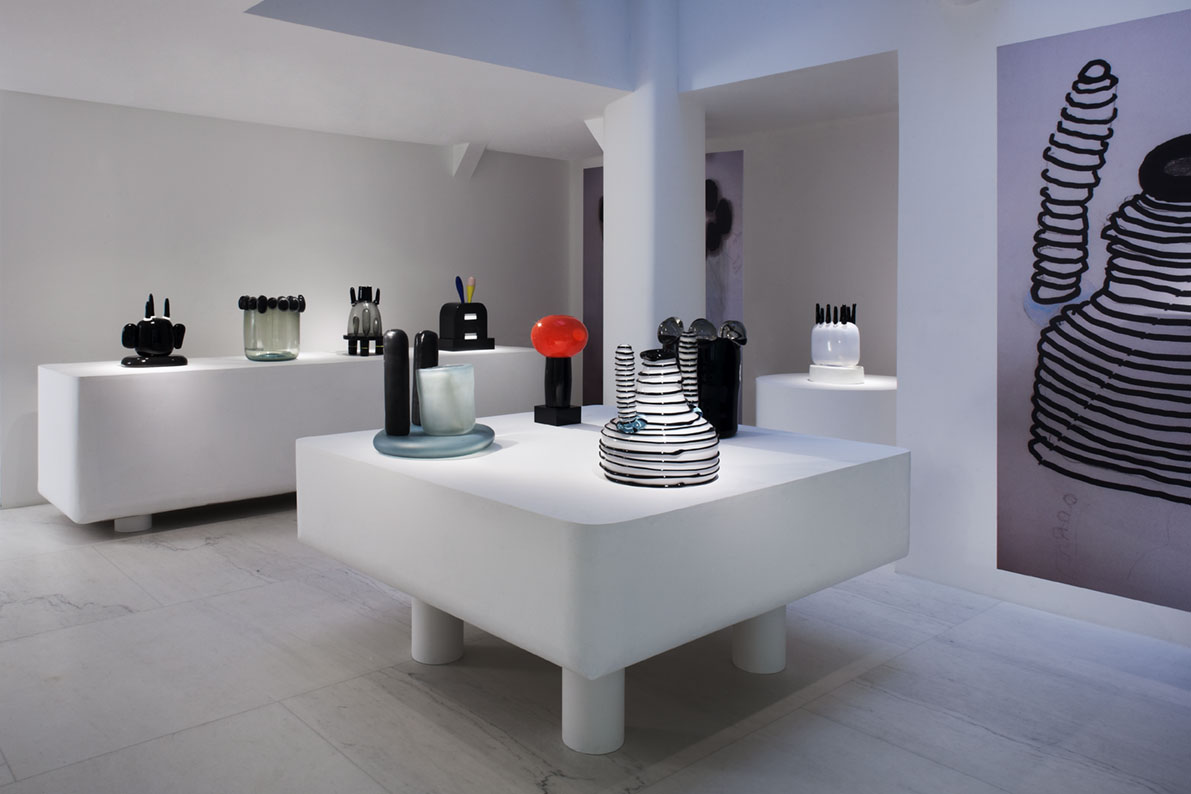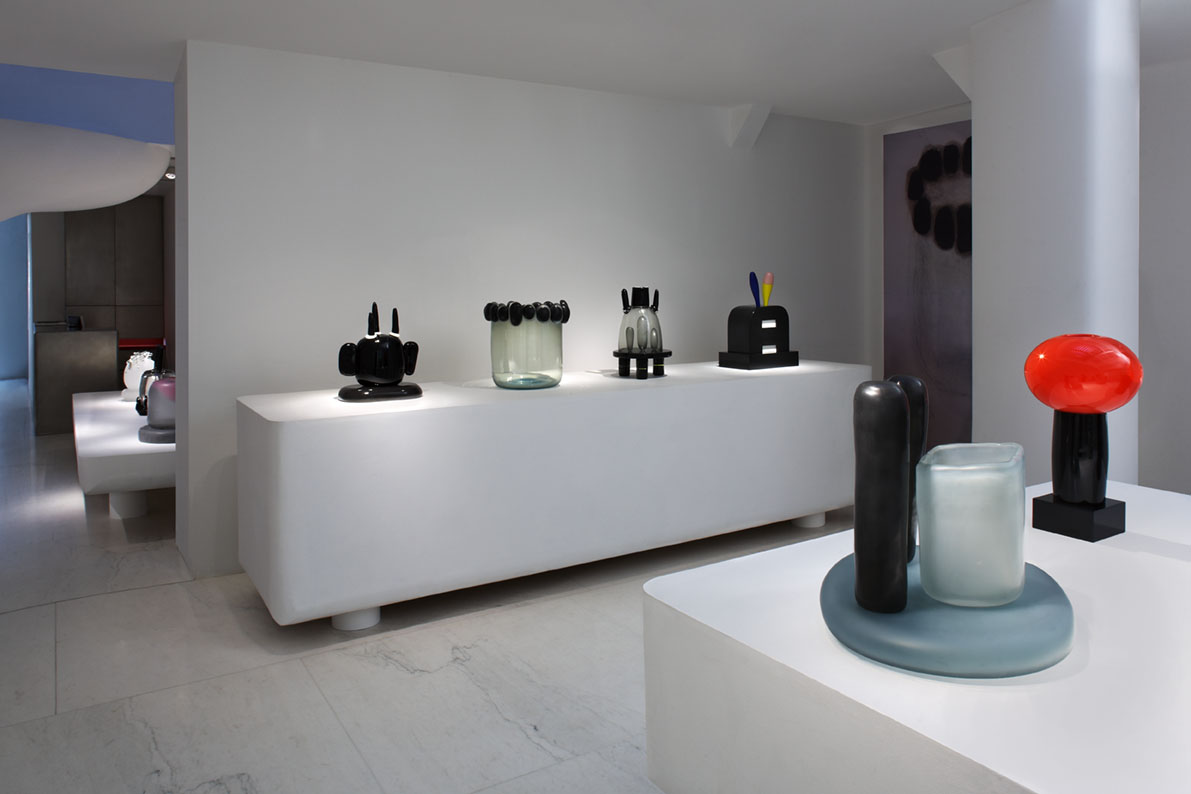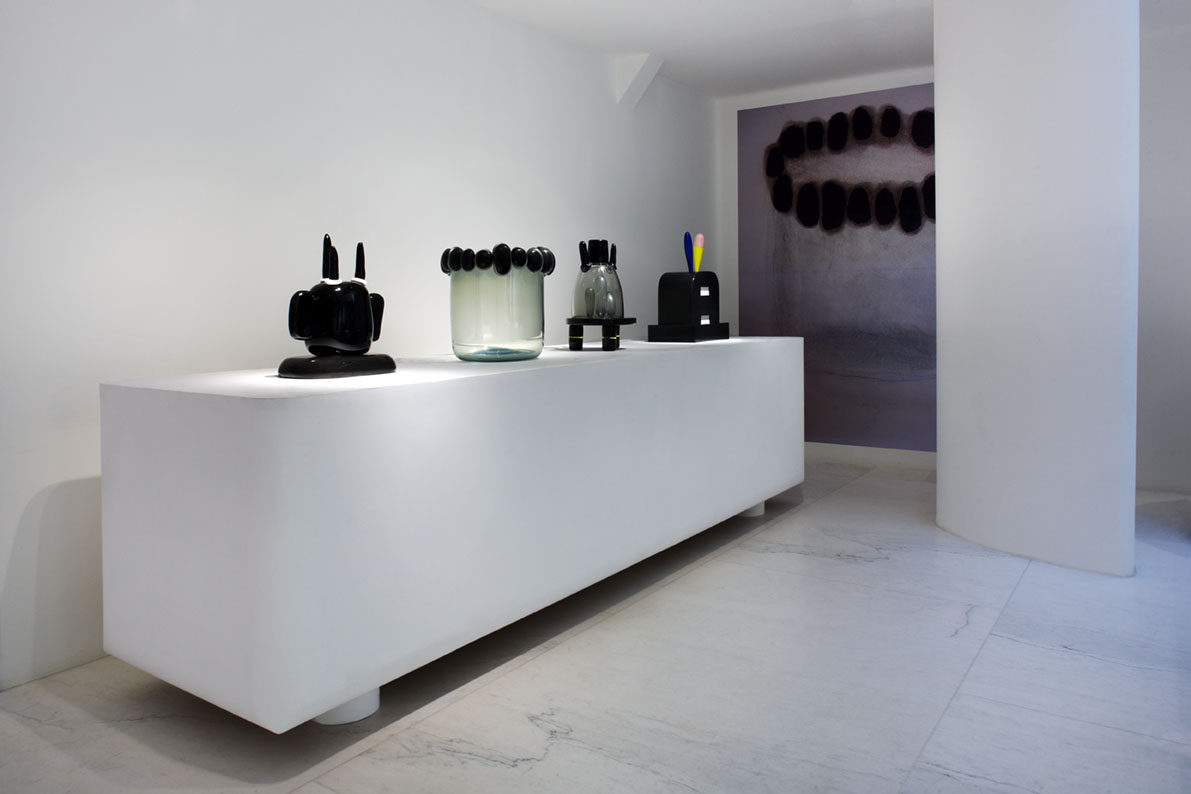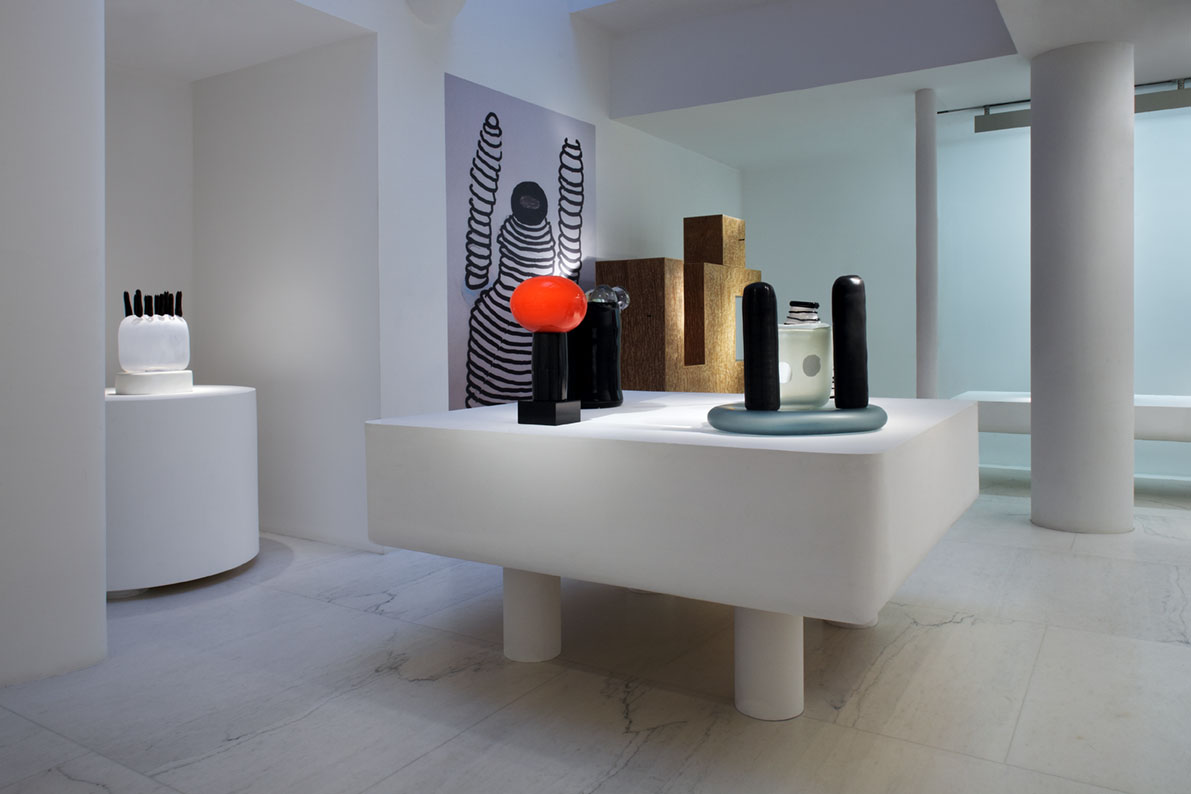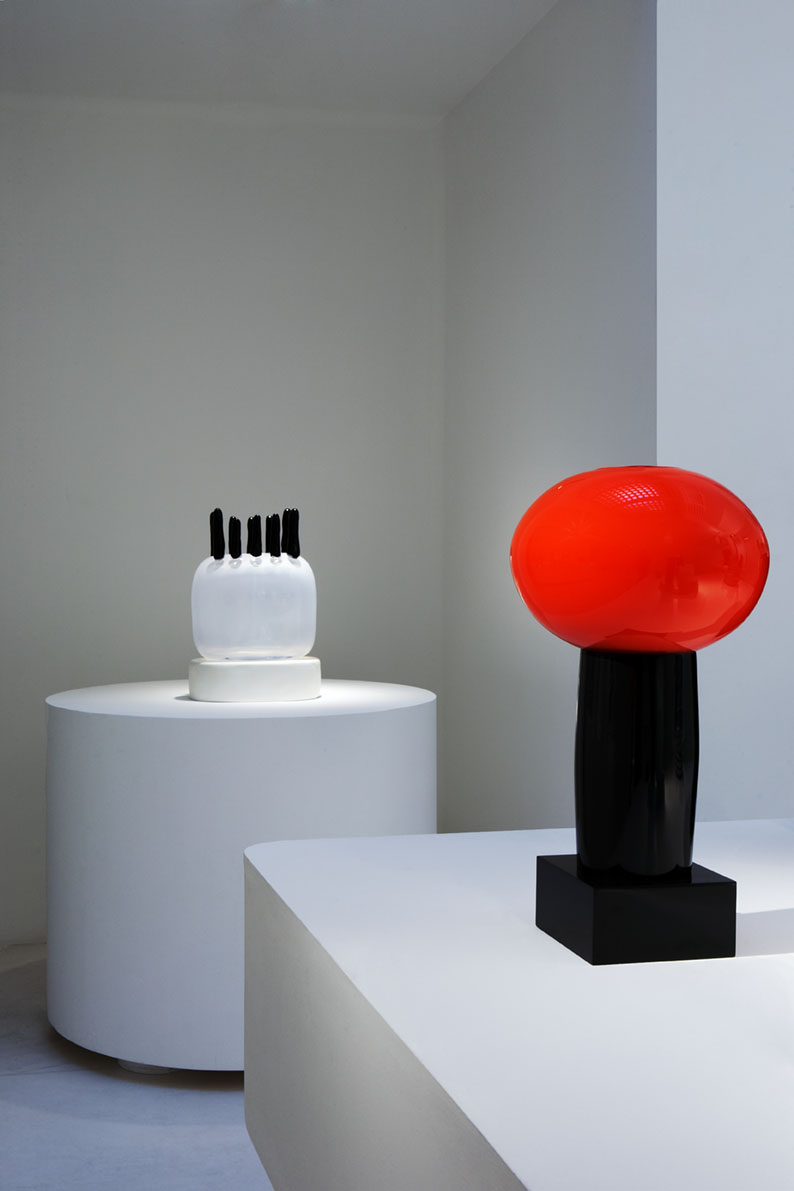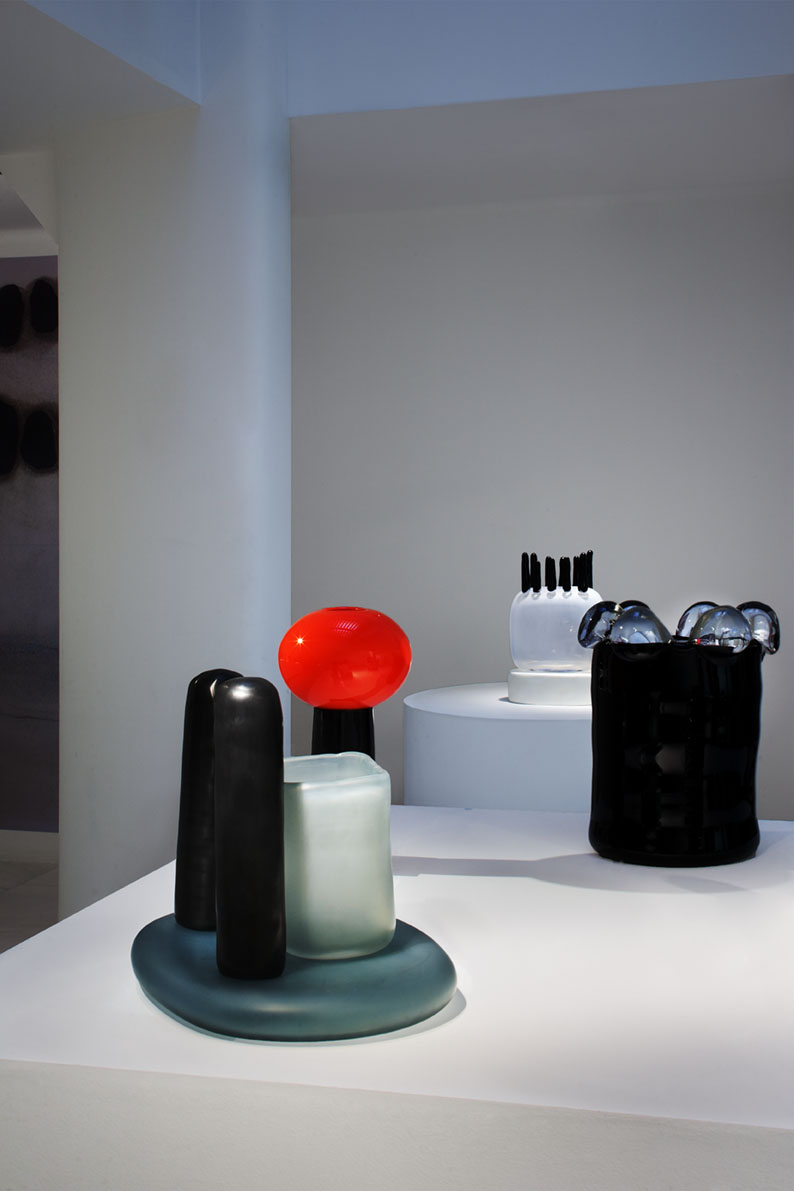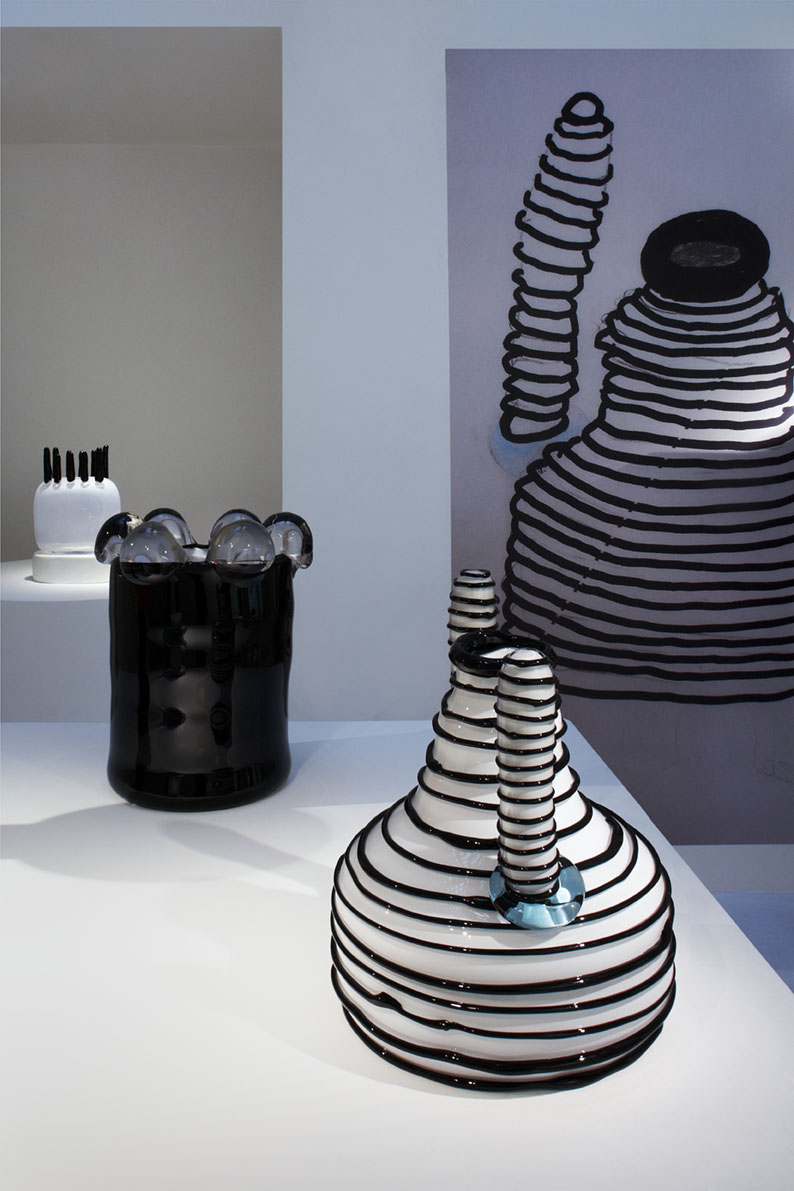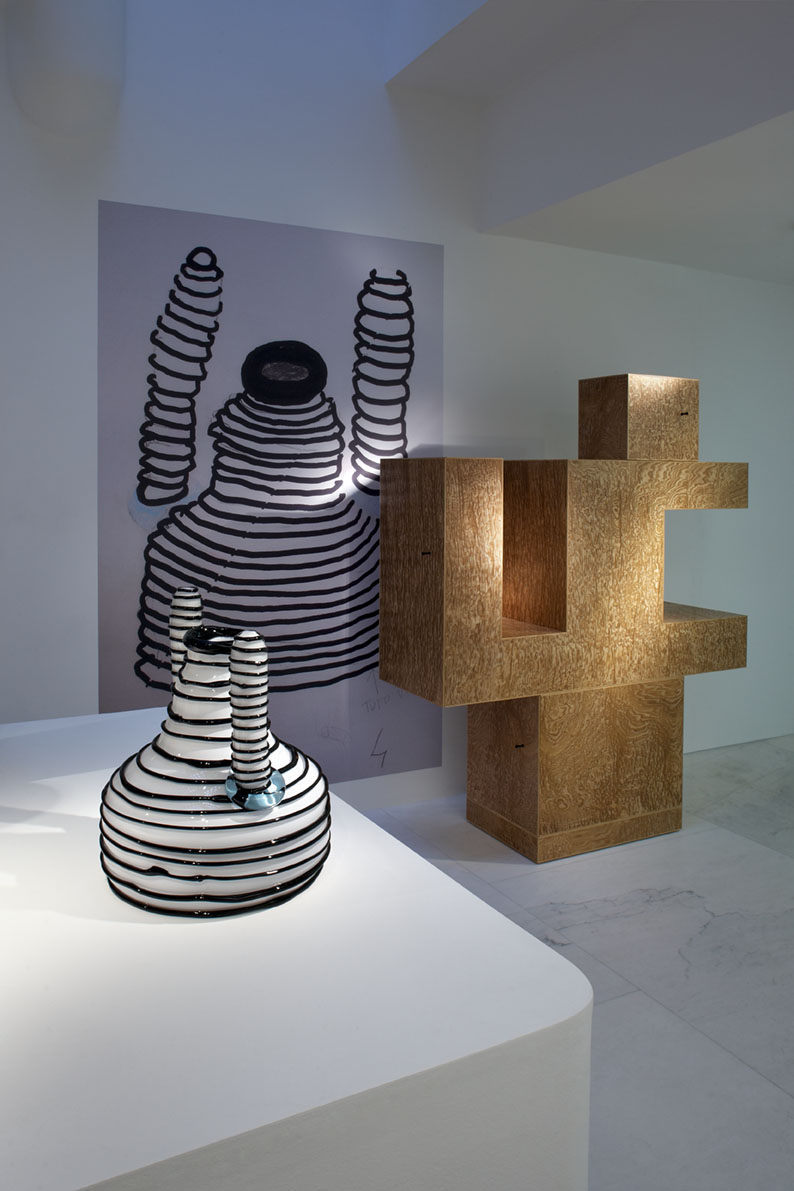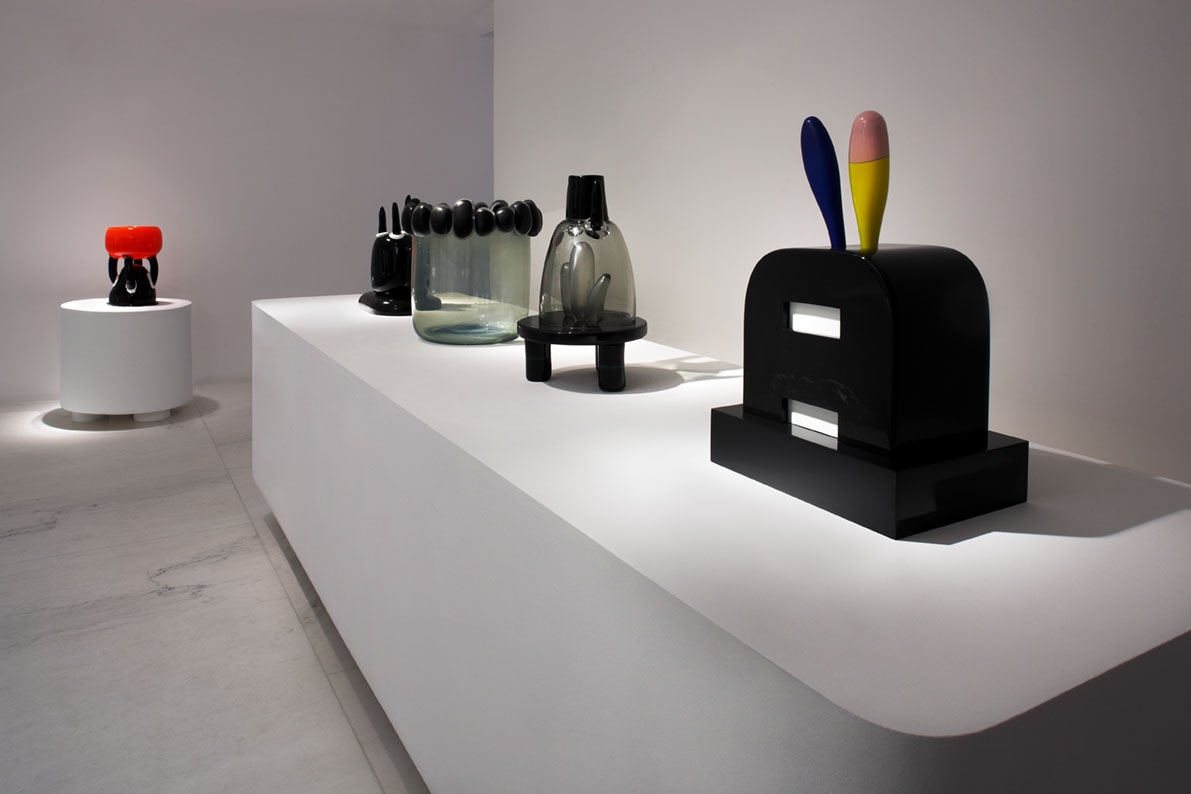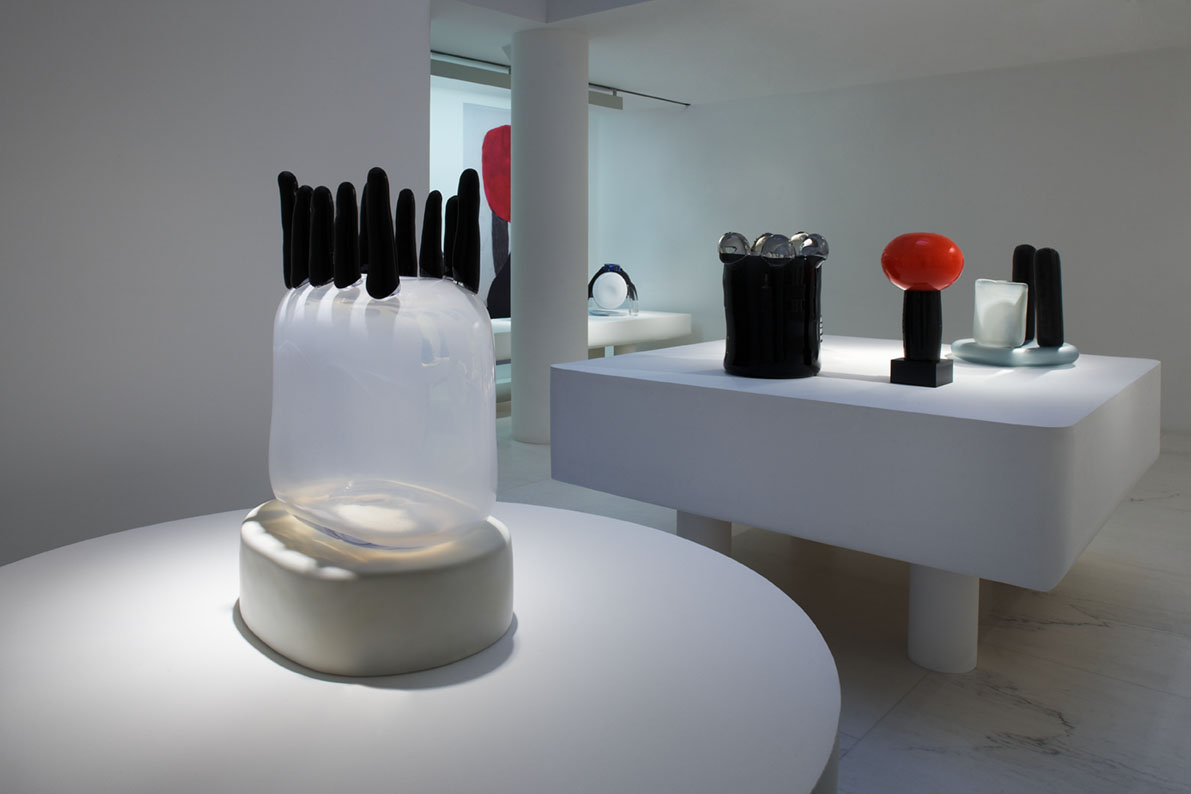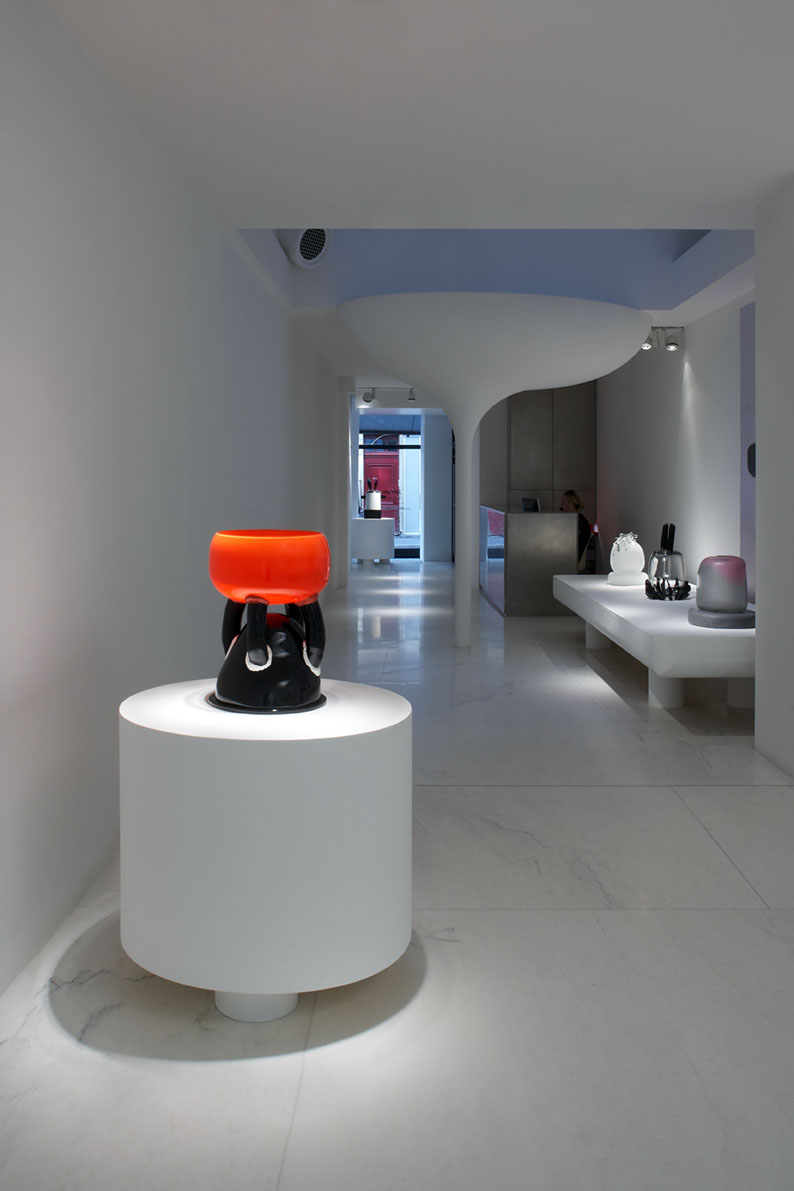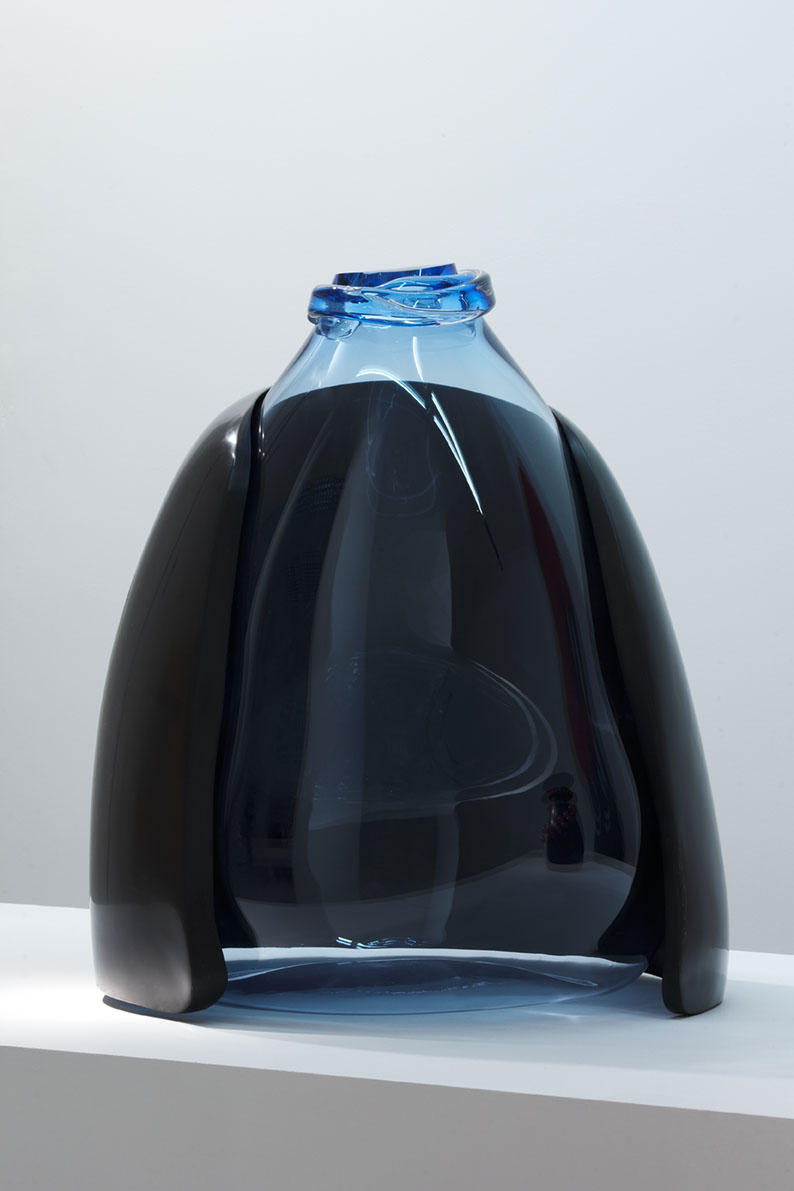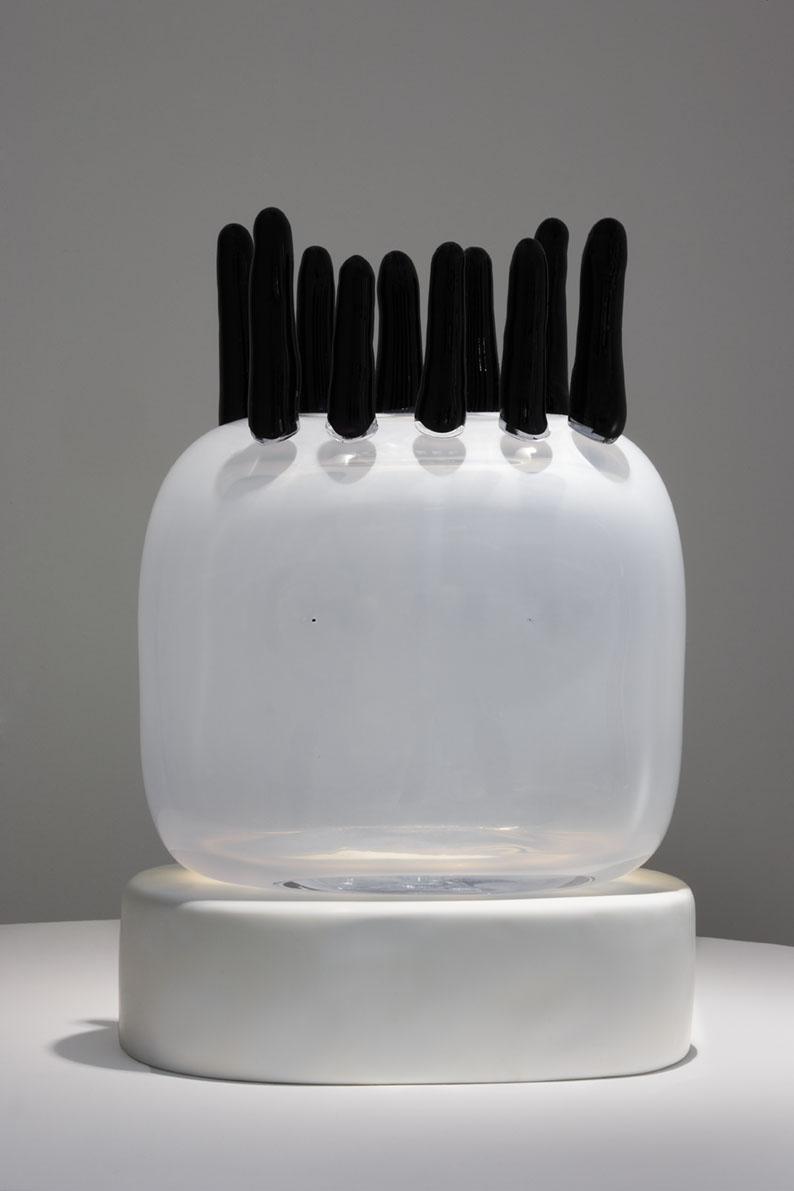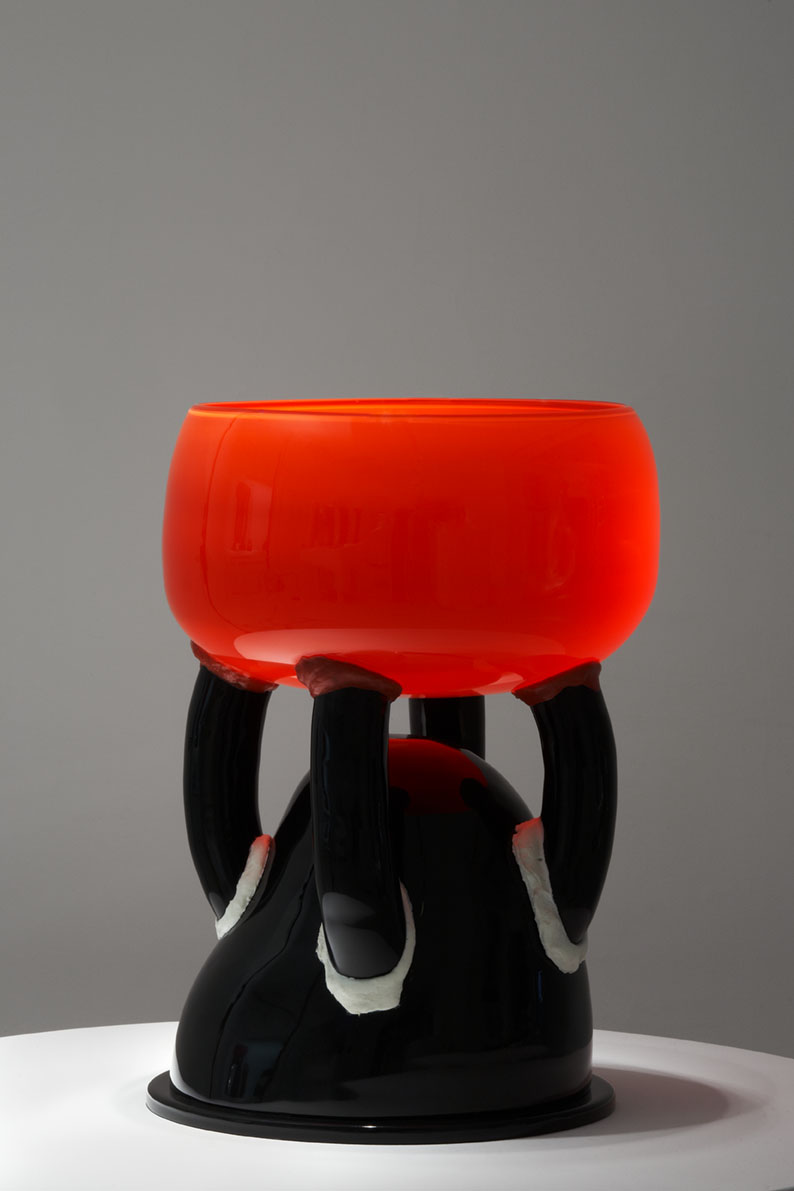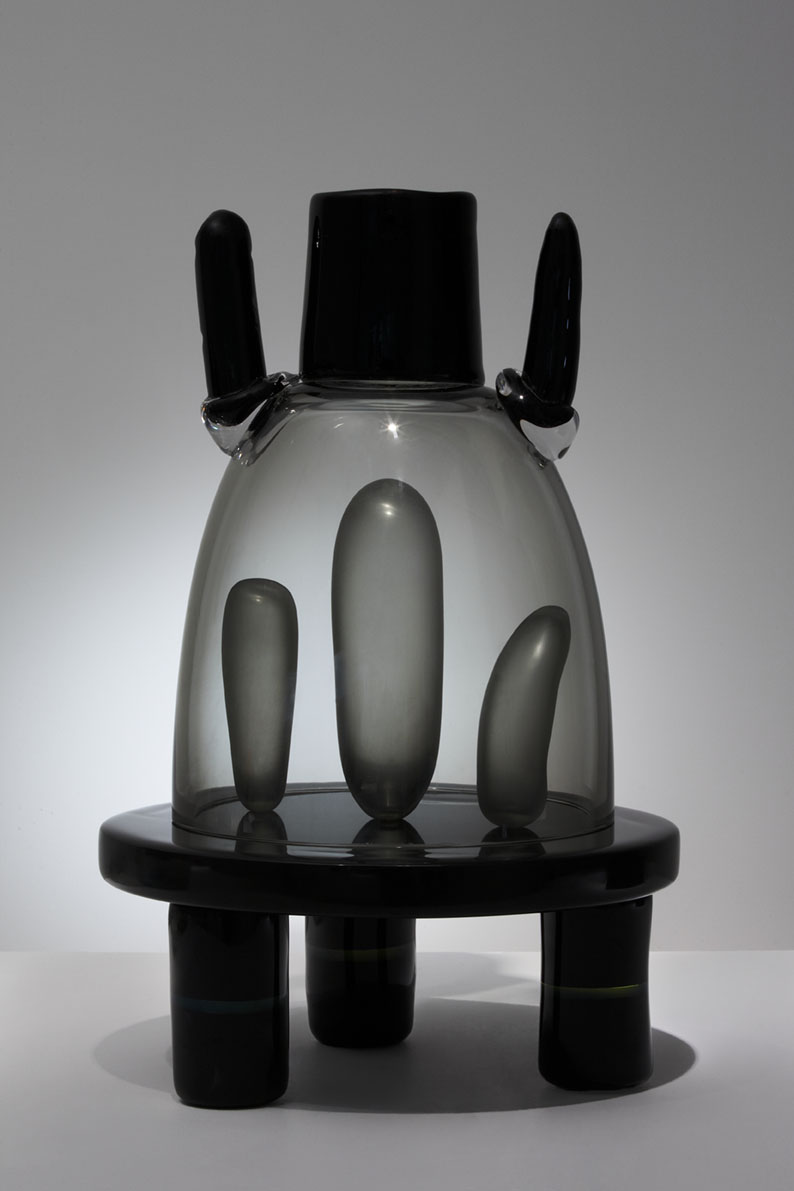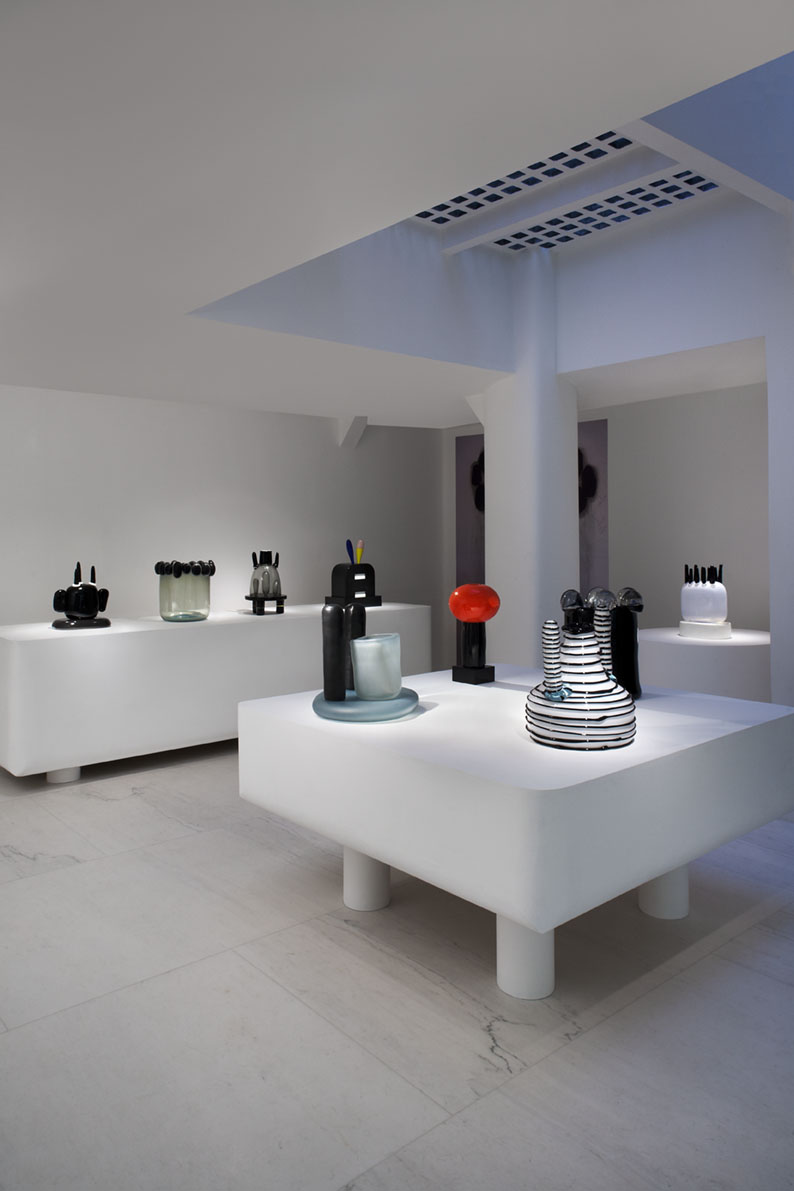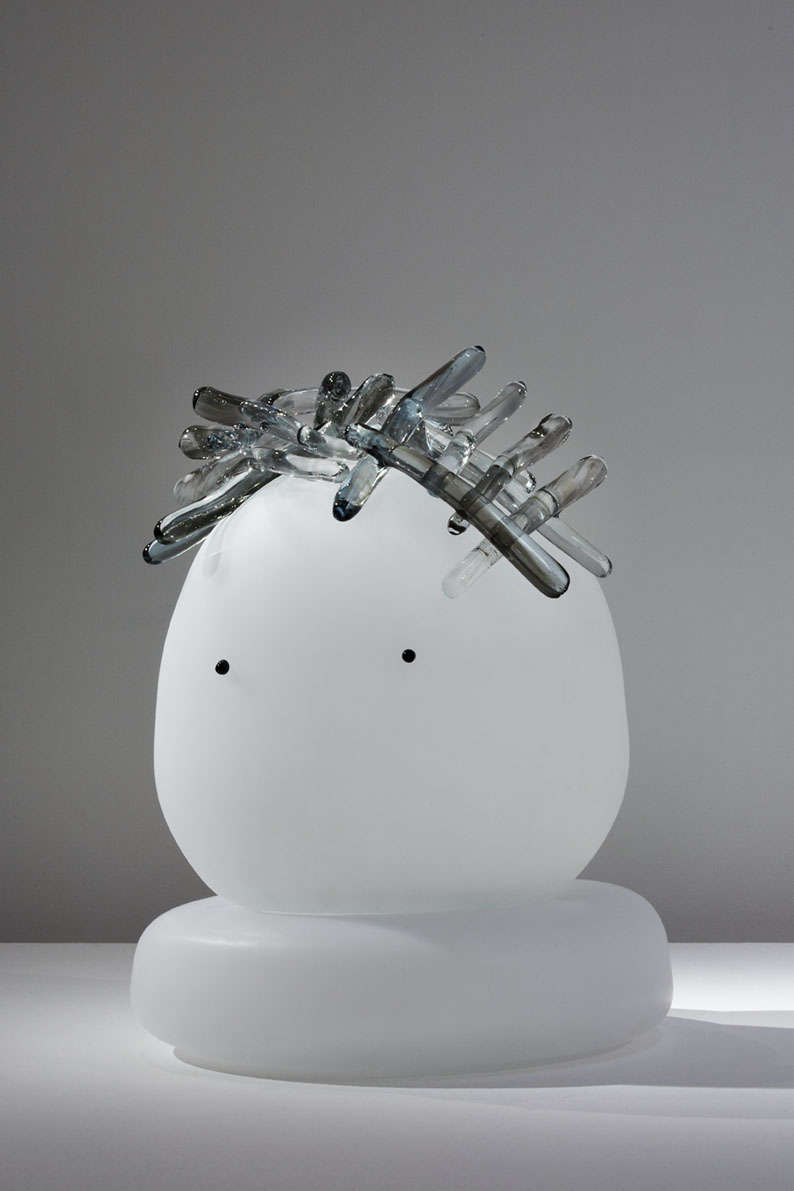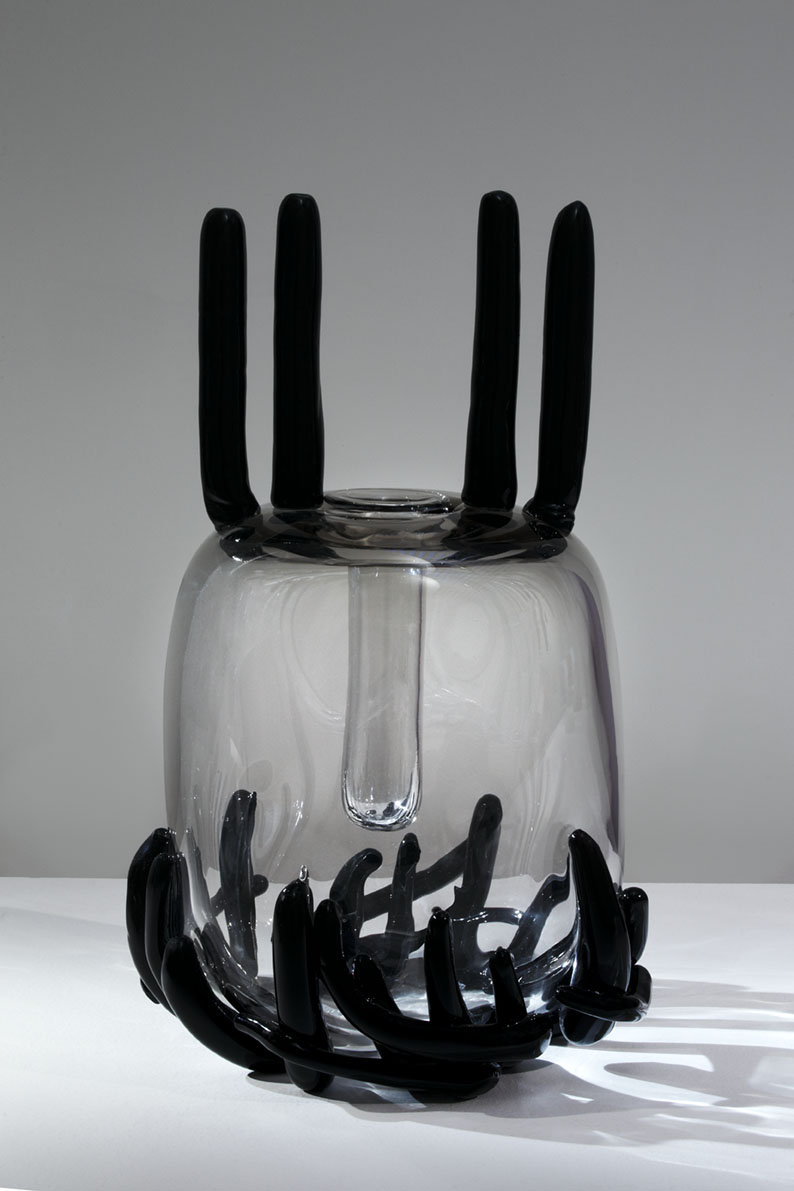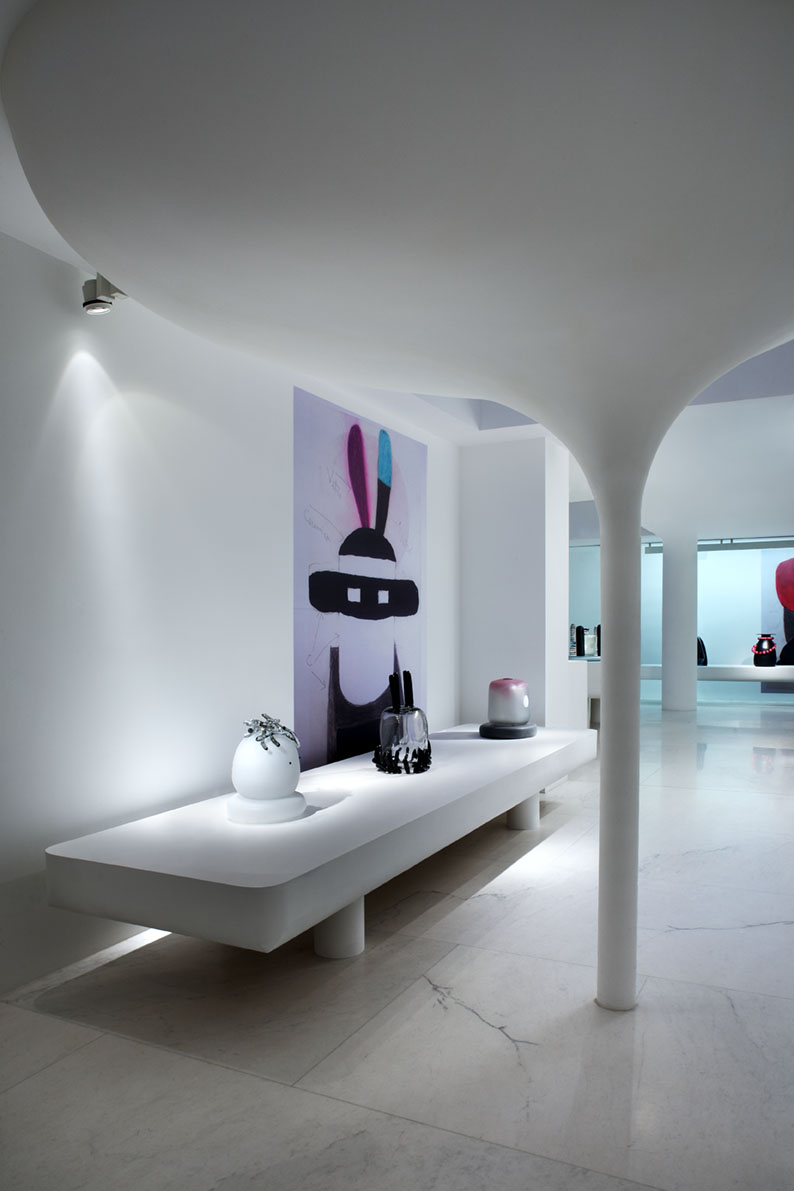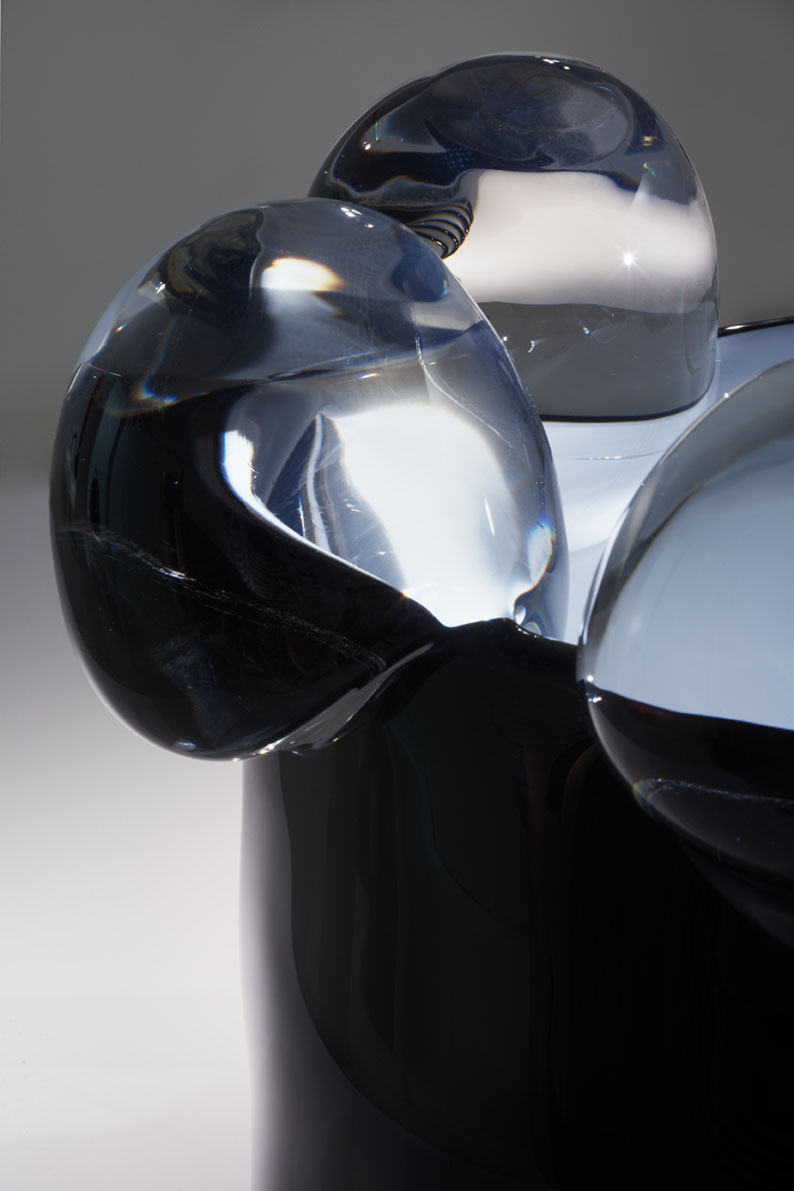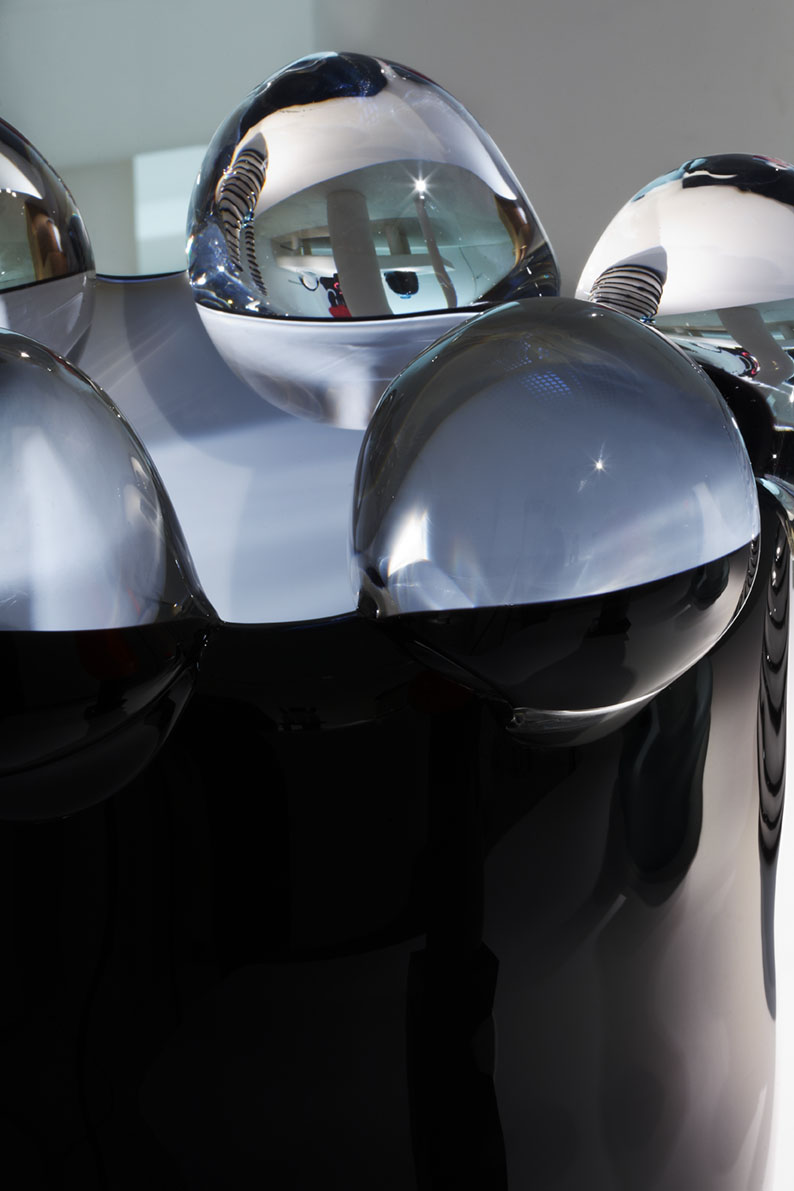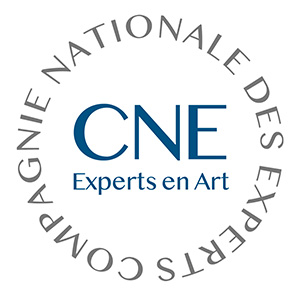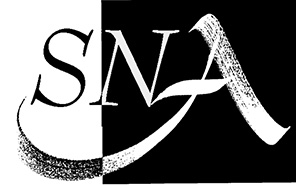The Laffanour-Downtown Gallery, in its space dedicated to modern and contemporary design 33 rue de Seine, presents a collection of vases never seen before: the « Kachinas », a suite of 20 pieces designed by Ettore Sottsass in 2004 inspired by the figurines of the Hopi Indians culture in America. Before his death in 2007, Ettore Sottsass have his agreement to the Circa (International Research Center for Glass and Plastic Arts) in Marseille and to the Van Tetterode workshop in Amsterdam, for the production of each vase. The realization of 5 copies of each model was completed in 2010.
« Designing is not about giving shape to a more or less stupid product for a more or less luxurious industry. For me, design is a way to discuss life. »
Pronounced by Ettore Sottsass in 1981, at the time of the foundation of the Memphis group of which has was the inspiration, this quotation could quality the Kachinas collection, of works full of spirit, these pieces being indeed symptomatic of this spiritual force so typical of his work, pioneer of the renewal of the Italian design of post-war, whereas the rationalism accused of strict forms, reasoned and systemic. Ettore Sottsass (1917 – Inssbruck, 2007 – Milan), an Italian architect and designer, began his career as a collaborator of his father, Ettore Sottsass Sr, a major figure in Italian architecture. After setting up his own practice in Milan in 1947, he moved to New York where he worked for the firm George Nelson, before returning to Italy where, beginning a close collaboration that lasted nearly 30 years, he was hired in 1958 as a consultant for Olivetti. As such, he was one of the creators of the first Italian computer ELEA 9003, in 1959. In 1969 he designed his red Valentine typewriter, now considered one of the most significant creations of 20th century design. Having joined Studio Alchimia, he later founded the Memphis group in 1981 before focusing on his own agency Sottsass Associati. He worked for Alessi, Esprit and participated in the design project for Milan’s Malpensa airport. This winner of numerous prizes (the Italian Compass d’Or prize), present in the collections of the great museums (MOMA in New York, Centre Pompidou, Paris), has endeavored throughout his career to propose a work between art, architecture and design.
This winner of numerous prizes (the Italian Compass d’Or prize), present in the collections of the great museums (MOMA in New York, Centre Pompidou, Paris), has endeavored throughout his career to propose a work between art, architecture and design.
Instigator of a radical art, where furniture, glass, ceramics, design and jewelry embrace all the possibilities offered by the new lexical language of modernism, which he has developed, the creator has designed here pieces where exuberance, pluralism, historicism and humor are confused, and where the object should no longer be understood in a technical and functional way, but presents a more affective, symbolic and poetic vocabulary.
Highly decorative and eclectic, these vases with their elegant opulence, deploy a symphony of forms and colors, freeing the designer from the confinement that a sterilizing unity could give him. For this exhibition, the artist makes indeed burst variety of the silhouettes, curves and tints, in the image of the radical art of which his work is marked.
Sometimes mutinous, sometimes narrative, sometimes masked, sometimes hirsute, other times bare-headed, these little clad spirits look at us and observe us with magnetism and majesty, the dignified aristocracy of certain pieces tempered by the childish and mischievous character of certain vases, where enthusiasm and spontaneity meet, a decorative element dodging a robust and firm form, a colored plume standing on a dark and gray vessel.
The rich versatility of his work is found in the desire for transcendence that Sottsass wants to confer on his work: a cultural universalism, an ethnic hybridization, adopting a posture that is both experimental and anthropological. Ettore Sottsass proposes a new language for these vases with an anthropomorphic layout, espousing plastic forms with energetic eloquence, whose symbolism and name recall the Kachinas. Indeed, in keeping with his habit of establishing a constancy between the distant past, popular culture and contemporaneity, so as to reveal the cultural potential of his design, these pieces are interpretations of the Kachina dolls, the spirits of the mythology of the Hopi and Zuni Indians of New Mexico and Arizona, in the southwestern United States, which Sottsass may have been able to imbibe on his many trips to the United States.
In this Amerindian culture, the Kachinas are spirits, spirits of fire, of the snake, of the rain, or prankster spirits, mischievous, beneficent or evil. A sort of inventory of the visible and abstract world. On the occasion of ritual festivals, these spirits are embodied in masked and costumed dancers. Brightly painted wooden dolls, also called Kachinas and representing these dancers, are offered to children, at the end of the festivities, so that they become familiar with the world of the spirits.
These vases, by their unprecedented character and the small number in which they were conceived, are revealing of Ettore Sottsass’ thought in an art opposite to the mass production, the hyper-consumerism of which the artist wanted to get rid of. Conceived in blown glass, the different elements are hot glued, these pieces revealing the association of the material more than a decomposition in a single element. The play of transparency and opacity presented by each of these pieces made of solid forms and tapered elements responds from one piece to another creating a narrative dynamic. Far from the architectural and strictly geometric forms by which Ettore Sottsass built his famous totems, where circles and squares are superimposed vertically, the soft and curved lines convey a sensory and spiritual aspect, more than intellectual, revealing in Sottsass all the evolution of his work, and of his alphabet.
C.R. Victoria Mirzayantz
